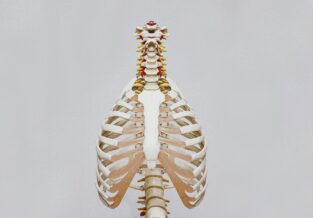A crick in the neck? Understanding Acute Wry Neck
Published on
23 Jul 2024


Written by
Chee Yan Ting
Senior Physiotherapist
Call us on: (03) 9975 4133
Acute wry neck, also known as a crick in the neck, is a condition characterised by sudden and painful neck stiffness and restricted movement - What is it & how you can manage it.
What is Acute Wry Neck?
This issue most commonly affects the facet joints of your neck, which are responsible for allowing movement between the vertebrae. The primary cause is inflammation of these joints, often accompanied by significant muscle spasms, which can significantly contribute to discomfort and restriction.
You might wake up one morning with a sudden neck restriction, or you could experience abrupt stiffness from a small movement like lifting your arm or flicking your hair back.
Who is Affected?
Acute wry neck commonly affects young people, ranging from children to individuals up to 40 years old, and usually occurs suddenly. In older adults, the condition tends to develop more gradually. Symptoms can appear in the neck or extend to the mid/thoracic spine.
Common Causes
Several factors can contribute to developing acute wry neck, including:
- Forward head posture/tech neck
- Thoracic kyphosis
- Stress
- Sudden increase in exercise
- Poor sleep quality
- Unsupportive pillow or mattress
- Poor desk ergonomics
- Activities requiring sustained postures
- Sedentary lifestyle
Prognosis and Recovery
The prognosis for acute wry neck is generally positive, with severe symptoms resolving within a few days to weeks, with a combination of physiotherapy treatment and therapeutic exercise. We often see however, that if the root cause is not properly addressed, future episodes of acute wry neck may take longer to recover from, and your posture can worsen. Therefore, once the acute symptoms have resolved, it is important to continue working with your physiotherapist to properly address the underlying causes, improve posture, ergonomics and consistency with exercise. This is crucial for reducing future recurrence of acute wry neck and ultimately, improving your health and wellbeing.
Physiotherapy Treatment
- Manual treatment techniques to improve postural flexibility
- Exercises to enhance postural stamina and endurance for sitting tasks
- Strength training for activities and exercises you wish to continue
- Guidance on ergonomic improvements
- Discussions on stress management and sleep quality, which are essential for recovery
Preventive Measures
Once the acute symptoms have settled, it is essential to work on the following areas to prevent recurrence:
- Improve postural mobility
- Increase postural stamina/endurance
- Enhance strength for desired activities
- Optimise desk and work ergonomics
- Address stress and sleep factors
- By focusing on these areas, you can ensure long-term neck health and reduce the risk of future episodes of acute wry neck
Summary
Acute wry neck can be a sudden and painful condition, but with the right approach, recovery is typically swift. Physiotherapy plays a critical role in both treatment and prevention, helping you to address the root causes and improve your neck and posture for the future.
Book an appointment with us at Pure Physio to start your journey towards a pain-free and active life.
About the Author
Chee Yan Ting — Senior Physiotherapist
Chee has a wealth of experience and is particularly adept at helping clients with long-standing neck pain, shoulder rehabilitation as well as management of acute knee and ankle injuries. Chee is a qualified ski instructor with a passion for treating winter sport injuries.



